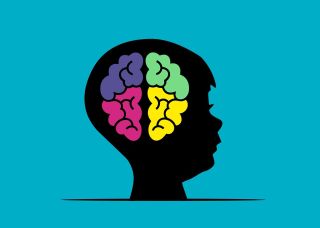Autism
New AI Tool Detects Autism Early in Toddlers
Diagnostic tool enables autism detection and intervention noninvasively.
Posted September 1, 2024 Reviewed by Kaja Perina

Scientists have developed a new artificial intelligence (AI) diagnostic tool that can help identify autism risk in toddlers. A new study shows how AI machine learning can predict Autism Spectrum Disorder (ASD) risk in children under 24 months old with nearly 80% accuracy. The research, published in August 2024 in JAMA Network Open, was conducted using U.S. autism datasets and performed by researchers at the Karolinska Institutet in Stockholm, Sweden.
Autism spectrum disorder is a complex neurodevelopmental disorder that affects social, behavioral, learning, and communication skills. The fifth edition of the Diagnostic and Statistical Manual of Mental Disorders (DSM) by the American Psychiatric Association consolidated Autistic disorder, Asperger syndrome, Childhood disintegrative disorder, and Pervasive developmental disorder-not otherwise specified (PDD-NOS) under autism spectrum disorder. The DSM-5 criteria for autism falls into two categories, persistent deficits in social communication/interaction and restricted, repetitive patterns of behavior.
How Prevalent is Autism
An estimated one in 100 children are diagnosed with ASD globally according to the Global prevalence of autism: A systematic review update published in Autism Research in 2022 by Zeidan et al. In the U.S., the prevalence of autism is even higher. According to the U.S. Centers for Disease Control and Prevention, 1 in 36 children have autism, and 1 in 45 adults have autism in America.
Specialists can reliably diagnose autism by age two, yet the average age of diagnosis in lower income households is 4.7 years and 5.2 years in higher income households in America according to the National Survey of Children’s Health (NSCH) report. The average age of first intervention is 4.7 years in the U.S. according to the same report.
Early Intervention for Children with ASD
According to the Eunice Kennedy Shriver national Institute of Child Health and Human Development, intervention for autism as early as two or three years of age, when the child’s brain is forming and has plasticity, gives the child the best chance of developing to their full potential. In some cases, children with autism treated with early intervention progress and develop to the point where they are no longer considered on the autism spectrum in later years per the NIH.
“Early identification of the likelihood of autism spectrum disorder (ASD) using minimal information is crucial for early diagnosis and intervention, which can affect developmental outcomes,” wrote the study corresponding author Kristiina Tammimies, PhD, in collaboration with co-authors Shyam Sundar Rajagopalan, PhD, Ashraf Yahia, MBBS, PhD, and Yali Zhang, MSc. The research received funding from the Strategic Research Area Neuroscience (StratNeuro) at the Karolinska Institutet, the Swedish Foundation for Strategic Research, and Hjärnfonden.
To create a noninvasive diagnostic AI tool to predict autism spectrum disorder for early diagnosis and intervention, the researchers used select features from background and medical data from the largest ASD research database worldwide.
The depth and breadth of training and validation data is essential to building robust AI machine learning models. Massive databases are used by AI machine learning algorithm to “learn” important features from the data instead of the explicit hardcoding of computer software instructions.
“Our proposed model, using only basic medical and background information, can be used to screen children at a very early age,” the researchers reported.
The Karolinska Institutet researchers used the largest database available for ASD research called SPARK, as well as the Simons Simplex Collection (SSC) database from the Simons Foundation Autism Research Initiative (SFARI). SPARK is the largest autism research study globally and is supported by the Simons Foundation Autism Research Initiative (SFARI), which is part of the Simons Foundation. The Simons Foundation Autism Research Initiative uses online recruitment and works in partnership with 31 American university research clinics across 26 states. The SPARK database contains records on over 100,000 people with autism and 175,000 family members.
What Types of AI Algorithms Predicted Autism the Best
To create their AI machine learning ASD prediction tool called AutMedAI, the researchers used data from 30,660 participants evenly split with those with ASD and those without ASD. To test and validate their AI model, data from 14,790 individuals from two cohorts were used for validation experiments. From SPARK they used records from 11,936 participants, of which 10,476 had ASD, and 1,460 did not have ASD. This study also used data from 2,854 individuals with ASD from the SSC database.
To develop their model, scientists used twenty-eight parameters and tested four different types of AI machine learning models in order to select the best performing one for predicting children with autism. These AI algorithms include random forest, logistic regression, decision tree, and eXtreme Gradient Boosting (XGBoost).
Out of these four algorithms, they discovered that the XGBoost algorithm performed the best and named it AutMedAI. It could predict autism in children under the age of 24 months with roughly 80% prediction accuracy.
“Our developed model has the potential for clinical use as a noninvasive ASD screening tool,” the researchers concluded.
Copyright © 2024 Cami Rosso All rights reserved.




